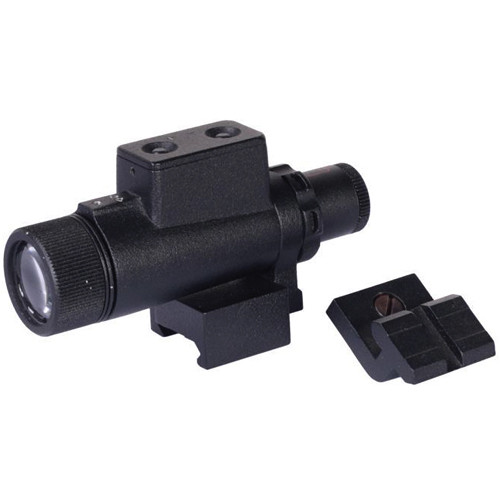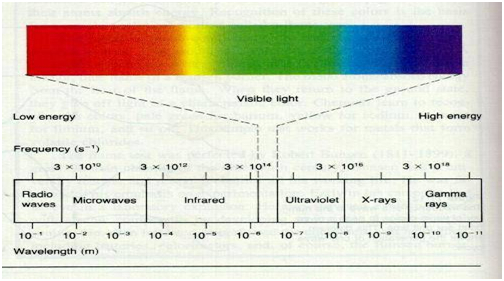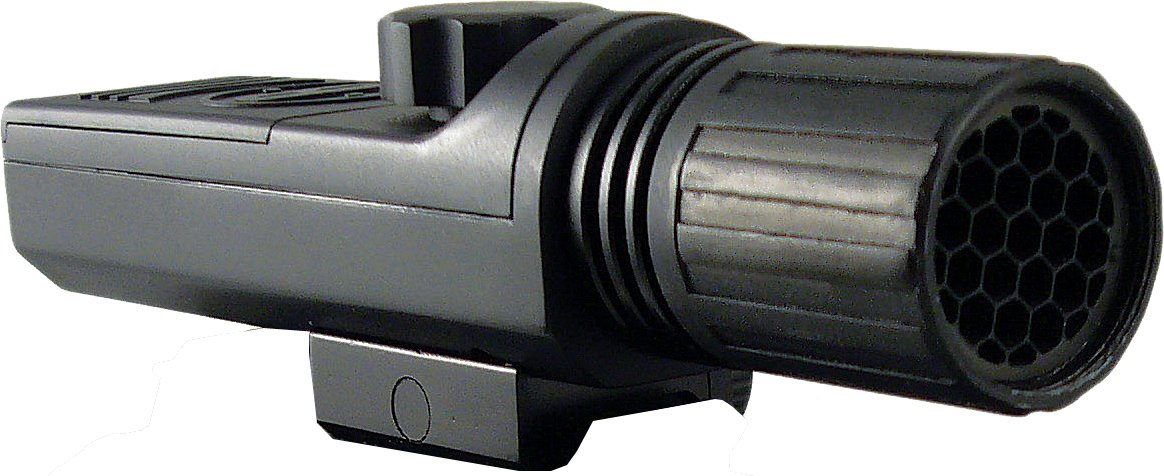I am writing this topic to discuss the various types of Infra-red Night Vision Illuminators that are available. I have done a lot of research on the subject the last few weeks and I found one that is called the Night Master that I would love to have, but they are not available in the U.S. at this time. If they ever are imported, I would very much like to try one at that time, but for now, they are only in the UK.
But until then, I currently only have 2 different IR lights, but a friend of mine says that he has 2 others that he will give to me the next time he comes to visit. He was wanting to see which performs better on the ATN X sight.
While the optic came with it's own Infrared Illuminator (IR450-B4) which works OK, I don't think it has hardly the range as it should. Even with the beam focused on spot.
I also have an IR lens cover that goes on my Surefire G2 flash light that also works really well, but the down side to it is the fact that it is visible to the naked eye.
But the two IR lights that he is giving me is an Ultrafire 3W 850nm light and an Ultrafire 3W 940nm.
All of which coincidentally run off of CR123 batteries.
From everything I have been able to read about the subject, the 940nm is the least visible of the bunch being the farthest away from the visible light spectrum to people and animals, but the 850's are said to have a longer range of illumination for the scopes, so I will just have to test all of the above to see which (if any) works the best for the scope itself, and to find out which is the most stealthy, so I am looking forward to testing this and doing some night shooting in the next few weeks.
Surefire FM33 G2 lens cover

ATN IR450-B4 adjustable spot/flood

850nm Ultrafire

940nm Ultrafire MX

But until then, I currently only have 2 different IR lights, but a friend of mine says that he has 2 others that he will give to me the next time he comes to visit. He was wanting to see which performs better on the ATN X sight.
While the optic came with it's own Infrared Illuminator (IR450-B4) which works OK, I don't think it has hardly the range as it should. Even with the beam focused on spot.
I also have an IR lens cover that goes on my Surefire G2 flash light that also works really well, but the down side to it is the fact that it is visible to the naked eye.
But the two IR lights that he is giving me is an Ultrafire 3W 850nm light and an Ultrafire 3W 940nm.
All of which coincidentally run off of CR123 batteries.
From everything I have been able to read about the subject, the 940nm is the least visible of the bunch being the farthest away from the visible light spectrum to people and animals, but the 850's are said to have a longer range of illumination for the scopes, so I will just have to test all of the above to see which (if any) works the best for the scope itself, and to find out which is the most stealthy, so I am looking forward to testing this and doing some night shooting in the next few weeks.
Surefire FM33 G2 lens cover

ATN IR450-B4 adjustable spot/flood

850nm Ultrafire
940nm Ultrafire MX




